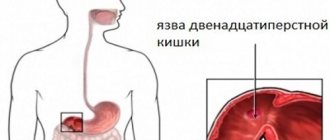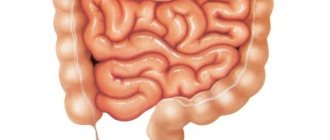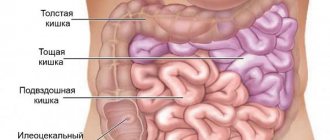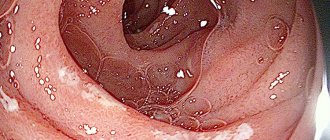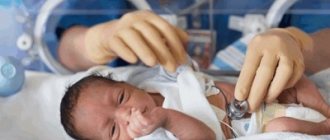Exogenous influence as a cause of rupture
When a strong and sudden mechanical impact occurs on the anterior abdominal wall of the body, intestinal rupture occurs. It must be said that such a situation ends in the death of the victim if he does not have time to provide professional assistance in time. Most often, intestinal rupture occurs during an accident. When the vehicle suddenly stops moving due to a collision with an obstacle, the passenger and driver continue to move forward by inertia. This results in a strong impact with the steering wheel, your own knees or the dashboard. In isolated cases, there may be an impact from a seat belt that was not fastened correctly. This sometimes occurs in child seats. If a passenger or driver was not wearing a seat belt, they could be thrown through the windshield during a car accident. This will cause an even stronger impact.
You can get a similar injury if you are a pedestrian and get hit by a car.
Regardless of the case, the basis of pathogenesis can be called a sharp blow to the abdominal area, which leads to an additional increase in intra-abdominal pressure. An important role is played by the presence of such a factor as the accumulation of gases in the large intestine. If the lumen narrows sharply, the gas pressure will increase, which significantly increases the risk of intestinal rupture.
Since the large intestine is constantly in some movement, its damage is very rare. More often you may encounter rupture of other internal organs located in the abdominal cavity. In most cases, there is a rupture of the spleen or liver. Organs located in the pelvis and retroperitoneal space - kidneys, bladder - may also be affected.
Causes
But why does esophageal rupture occur? There are several reasons for the occurrence of this type of pathology. These include:
- unqualified performance of certain medical or diagnostic procedures. For example, esophagoscopy or cardiodilation;
- physical injury to the body;
- entry of various foreign objects into the esophagus;
- burns of the mucous membrane.
There is also a second type of the above pathology, the causes of which do not depend on the influence of external factors. This type is called spontaneous rupture of the esophagus. It is a consequence:
- inhibiting the gag reflex;
- severe coughing;
- lifting heavy objects;
- excessive overeating;
- difficult pregnancy.
Abdominal adhesions
The greatest risk of encountering a rupture of the intestine (large and/or small) is in the presence of adhesions in the abdominal cavity. Since adhesions can incredibly tightly fix the intestinal walls, its mobility decreases several times. Sometimes you may encounter situations where the adhesion is too tightly attached directly to the intestinal wall. When it begins to separate, it can rupture not only the intestine, but also the area that is located nearby.
Adhesions in the abdominal cavity may appear due to an inflammatory process or as a result of surgery. A process such as the appearance of adhesions is, to some extent, considered a protective reaction of the body, which makes it possible to set boundaries for the inflammatory process and prevent it from spreading further. When the inflammation is advanced, effusion begins to appear. It contains a huge amount of fibrin and other various substances. Fibrin begins to glue the intestinal walls together and prevents the inflammatory process from spreading to other areas of the small or large intestine. Adhesions are an irreversible process, so these formations will remain with a person for life. The risk of intestinal rupture is increased several times by the presence of tumors, compression by a hernial sac, or overfilling with large amounts of feces or gases.
Small intestinal rupture consequences
The incidence of small intestinal injuries is 35% of all abdominal injuries, which is higher than the incidence of dysfunction of other organs. This is explained by the significant length of the intestine, reaching 5 m, the openness and unprotectedness of its parts.
Isolated injuries account for 20% of all cases. Injury to the intestine of the open and closed type is accompanied by a violation of the integrity or dysfunction of adjacent organs of the peritoneal space, skull, sternum, pelvis or spinal region.
IT IS IMPORTANT TO KNOW! Even a “neglected” gastrointestinal tract can be cured at home, without surgery or hospitals. Just read what Galina Savina says and read the recommendation.
Damage to the small intestine is varied. It all depends on the method of injury. More often, a violation of the integrity of the organ occurs when the body is compressed by two separate objects, a blow to the stomach, or falls from high structures. The nature of the injury is determined:
- type of grass;
- the strength of attachment of the entire intestine or a separate part;
- state of the organ;
- degree of intestinal fullness at the time of injury.
For example, fixed parts of the small intestine are more often damaged, as opposed to mobile areas. Therefore, the number of injuries to the iliac spine is greater than cases with injuries to the jejunum. Open injuries to the small intestine are associated with wounds from bladed weapons or firearms. In this case, the small intestine has many paired through holes.
Type classification of damage
When bruises or contusions of the small intestine occur:
- hematoma accumulations in the abdominal space;
- bloody accumulations under the intestinal mucosa.
In case of hidden damage and wounds, the following may be injured:
- serous epithelium;
- mucous;
- the entire organ, right down to the lumen.
Some types of damage.
Damage to the small intestine can be:
- end-to-end;
- fragmented;
- crossed;
- monofocal, that is, with injury in one place;
- polyfocal, that is, with damage in several places;
- localized-isolated;
- multiple;
- accompanied;
- combined.
The small intestine may rupture completely or partially:
- across;
- in the longitudinal direction.
Intestinal loops can tear off from the transverse colon:
- with circulatory disorders;
- without problems with blood supply in the loop with the intestine.
There are 3 groups based on the degree of intestinal damage:
- Minor injuries such as excoriation, cracking, tears of the walls or mucosa. In these cases, treatment is not necessary; the wounds heal quickly.
- Moderate injuries, for example, extraperitoneal tissue dissection, intestinal injury without damage to abdominal tissue.
- Severe injuries with disruption of the integrity of the abdominal tissues and adjacent organs. Often complicated by infection of the peritoneal space and/or accumulation of loose fibrous connective tissue between organs.
Clinic and diagnostics
The symptoms of injuries to the small intestine are varied and are determined by the nature, location, severity of the injury, compatibility with injuries to adjacent abdominal organs and body areas (skull, spine, chest, pelvis). Symptoms worsen over time, becoming more severe.
THIS IS REALLY IMPORTANT! The gastrointestinal tract cannot be neglected - this risks cancer. Cheap product No. 1 against stomach pain. FIND OUT >>
- The desire of the victim to constantly lie in the fetal position, since in other positions the pain syndrome intensifies.
- In the first 2 hours, signs of acute abdomen syndrome, peritonitis with diffuse pain and muscle deflation of the abdominal wall appear.
- The mouth becomes dry and the tongue is coated.
- Vomiting with blood when the injury involves the proximal colon.
- Immediately the pulse slows down, then quickens with a simultaneous drop in blood pressure.
- Fever, fever with manifestations of leukocytosis.
If injury to the intestine is accompanied by hematomas of the walls, bruises or small ruptures of its compartments without severe bleeding, pain shock and other symptoms appear only with the damage itself.
Subsequently, a “light” period begins without severe symptoms, lasting up to several hours. The severity of the resulting intestinal injury determines the direction of the dynamics, which can take a positive direction.
Negative symptoms appear more often, accompanying the worsening of the pathology.
When the abdomen is injured in a closed type, during the first 60-120 minutes, signs characteristic of bruises of hollow and/or organs with one parenchyma gradually appear. Over time, the symptoms of slowly developing peritonitis increase. In this case, it is difficult to diagnose the separation of the intestine from the peritoneal duplication, which is not always accompanied by bleeding into the peritoneum.
Over time, after a “bright” asymptomatic interval, peritoneal signs gradually develop, lasting up to 7 days. Necrotizing tissues form if blood circulation is disrupted due to ruptures of the peritoneal duplication, hematomas appear, and vascular thrombosis spreads in the intestine.
Symptoms of small intestinal injuries are variable. Symptoms improve or worsen over time since the injury.
Due to the state of shock and rapid blood loss, it is difficult to diagnose the nature and extent of the injury. This leads to diagnostic errors and delayed operations.
To diagnose possible intestinal injuries and determine the severity of injuries, in addition to examination, a number of additional tests are required:
Ultrasound echo diagnostics is necessary to visualize the extent of damage.
- Digital-rectal examination to detect sphincter laxity or gaping. The method can diagnose paralytic intestinal obstruction, protrusion of the peritoneal pouch due to accumulations and changes in blood with exudate accumulated in the pelvic part.
- X-ray examination to detect free gas under the diaphragm, which will indicate a rupture of the hollow organ.
- Ultrasound echo diagnostics to visualize the extent of damage, the degree of involvement of other organs and tissues of the peritoneum.
- Minimally invasive examinations, such as laparocentesis (with sampling of pathological fluid), laparoscopy (examination of the peritoneum using the optical system of a laparoscope through small holes in the skin). The methods make it possible to obtain diagnostic accuracy of up to 92-99.5%. Laparoscopy is an extreme method, therefore it is used in doubtful cases in order to clarify the preliminary diagnosis.
Open injuries are easier to diagnose than closed ones. To increase the accuracy of diagnosis and in doubtful cases when the wounds are “blind”, it is recommended to use contrast X-ray - vulnerography.
Treatment methods
For any type of injury to the small intestine and adjacent abdominal organs, early surgical intervention is an appropriate way to eliminate the problem. In most cases, patients with intestinal injuries present to the doctor in a state of deep shock. Before the operation, the doctor takes a number of necessary measures:
- antishock therapy;
- diagnosing pathology and its causes.
The operation, predominantly midline laparotomy, is performed under endotracheal anesthesia using relaxants. When examining the abdominal cavity after the incision:
- drain the damaged area of blood using an electric suction;
- find the source of blood loss and stop it;
- If necessary, the contents of the small intestine are removed using an electric suction.
Detection of parts of the intestine with a violation of integrity is carried out by a thorough examination of each of its sections. The reference point is swelling due to the onset of inflammation and fibrin deposition. The area of the tear is covered with a large amount of gauze. The intestinal loop should be brought out onto the abdominal wall, and then the inspection of the intestine and nearby organs should continue to determine the extent of the damage.
Open wounds lead to damage to the intestine in several places. In this case, tissues are torn in pairs, and neighboring organs are injured.
Therefore, the examination should be as thorough as possible.
After examining the intestines, large tampons are inserted into the left and right lateral canals, as well as into the small pelvis to suction out the exudate and protect the peritoneum from infection. General tactical principles in intestinal surgery:
- stopping bleeding;
- prevention and elimination of infection in the peritoneum, which spreads when intestinal contents penetrate into the cavity;
- normalization of intestinal patency;
- washing with saline NaCl solution with furatsillin;
- drainage of the abdominal cavity;
- installation of drains for the administration of antibacterial drugs (to take preventive measures for peritonitis).
- Suturing of intestinal rupture with excision of destroyed tissue and damaged edges of questionable viability.
- Resection of part of the intestine in case of a large number of wounds, large-scale ruptures of the intestinal wall or separation of parts of the intestine from the duplication of the peritoneum.
The choice of the type and extent of the surgical method, as well as its phasing, are determined by the type and scale of existing injuries and the general well-being of the patient.
Mortality from small intestinal injury depends on the timely detection of injuries.
Peritonitis, which develops as a result of late admission of the patient with late surgery, is the main cause of death.
Death is also possible due to failure of the sutures of the intestinal anastomosis, when damage to the small intestine is combined with severe injury to other organs of the peritoneum and the musculoskeletal system.
Source: https://limto.ru/razryv-tonkoj-kishki-posledstvija/
Intestinal obstruction as a cause of intestinal rupture
If a person suffers from intestinal obstruction, then due to severe obstruction of the lumen of the immediate distal areas, expansion occurs due to the accumulation of feces, gases, and liquid. A similar situation can arise due to intestinal volvulus and prolonged stool retention. The colon swells to such a size that even a minor mechanical impact can cause rupture.
The risk of rupture increases if a person suffers from Crohn's disease, colitis or ulcerative colitis. The intestinal wall becomes weaker, making it very vulnerable.
Iatrogenesis
Ruptures may occur due to intraluminal endoscopic intervention in the colon. The complication most often occurs due to incorrect and abrupt insertion of the colonoscope. The risk increases if the patient suffers from serious bowel disease. If all safety rules are followed during an endoscopic examination, the risk of injury is minimal.
Perversions of a sexual nature
If there is a voluntary or forced insertion of a foreign object into the anus, this can cause a rupture of the sigmoid colon. The problem has become increasingly common in recent years. In the hospital, no one is surprised anymore if people with a foreign object in the anus seek help.
If, after non-standard sexual entertainment, small foreign bodies remain in the rectum, this can cause the development of a pressure sore of the wall, and then perforation.
Symptoms
Tumors of varying degrees of differentiation have significant differences in the clinical picture. Sometimes there is a latent, that is, hidden flow. In this case, neoplasms are detected unexpectedly - for example, during an endoscopic examination of the intestine or during surgery for a completely different reason.
Benign tumors
Clinical manifestations can occur when tumors reach sizes of 1.5-2 cm or more in diameter. There may be several polyps, they tend to be located in groups. The risk of malignancy increases as the tissue grows.
Adenoma of the sigmoid colon or other benign tumor is manifested by symptoms such as:
- nagging pain in the abdomen;
- tenesmus (false urge to go to the toilet);
- secretion of mucus, less often blood with feces.
Sometimes there are complaints about bowel regularity and frequent constipation. With large tumors, there is a possibility of developing clinical intestinal obstruction. This condition is manifested by abdominal pain, nausea, bloating without passing gas and vomiting - including mixed with feces.
Diffuse polyposis of the colon
This is a hereditary (family) disease, which is considered precancerous - since 10-20 years after the onset of the pathological process there is a very high risk of malignancy. Multiple polyps formed by glandular epithelium appear on the mucous membrane of the colon, including the sigmoid colon (because of this, the process is also called adenomatosis).
A benign tumor of the sigmoid colon in the case of diffuse polyposis is characterized by the following manifestations:
- Abdominal pain.
- Intestinal bleeding.
- Frequent diarrhea.
- Heartburn.
- Belching.
- Discomfort in the epigastrium.
- Weakness, dizziness.
- Weight loss, exhaustion.
- Anemia.
Clinical manifestations are recorded in children aged 10-12 years (juvenile form) or in adolescents at the stage of puberty (proliferating type). There is a third option - Peutz-Jeghers syndrome (hamartoma). Along with the symptoms already listed in the list, one can also observe dark spots of pigmentation on the skin around the mouth, on the palms and cheeks, on the mucous membrane of the lips, and signs of polyposis are noted even in the newborn period.
Malignant formations
A description of cancer symptoms may include signs such as:
- pallor, weakness, progressive anemia;
- abdominal pain of varying severity;
- increased body temperature;
- alternating diarrhea and constipation;
- bloating, rumbling in the intestines;
- discharge from the rectum - mucous, bloody, putrefactive;
- nausea, vomiting, loss of appetite;
- feeling of heaviness in the epigastrium, belching;
- phenomena of intestinal obstruction.
Sometimes you can observe an atypical form, in which there are no complaints with a clearly palpable tumor. A completely different picture is typical for the so-called pseudo-inflammatory variant of the course. Patients experience a clinical picture of an “acute abdomen”: severe pain, muscle tension in the abdominal wall, high body temperature, signs of intoxication with an increase in leukocytosis during blood tests in the laboratory.
Complications
They are more typical and more common in malignant neoplasms, although an adverse effect of the differentiated structure (for example, with significant sizes or a large number of polyps) cannot be ruled out. A tumor of the sigmoid colon can be complicated by a number of conditions:
- Intestinal obstruction.
- Perforation of the tumor.
- Development of the inflammatory process.
- Bowel perforation.
- Bleeding.
- Invasion of organs and tissues (including as a result of metastasis).
Signs of injury
All symptoms that arise as a result of rupture of the small or large intestine have one common name - acute abdomen. Symptoms of intestinal rupture are as follows:
- Severe sharp pain appears in the lower abdomen. The painful sensations are stable and are not eliminated by painkillers.
- The abdominal muscles are in constant tension. During palpation, painful spasms can be felt.
- If there is a rupture of the upper part of the intestine, then vomiting of feces and blood in the stool are observed.
- There is a bitterness in the mouth.
- There is a frequent urge to defecate of a false nature.
- A strong pulsation is felt at the site of the rupture.
If these symptoms appear, you should immediately consult a doctor, since the consequences of intestinal rupture can be very dire.
Disease prevention
No one is immune from injuries and unforeseen situations in life. But at the same time, you can protect yourself by eliminating at least some provoking factors, which mostly depend on the person:
- watch your diet. Avoid foods that are heavy on the stomach, which can cause constipation, which then causes stretching of the intestinal walls and their thinning;
- lead an active lifestyle - moderate physical activity improves digestion and peristalsis;
- If you experience any alarming symptoms that may indicate gastrointestinal diseases, you should immediately consult a doctor.
The mechanism of closed injuries of the small intestine is different. More often it is a direct blow to the stomach, compression between two planes. The pathogenesis of various types of morphological changes is associated with the action of a traumatic factor, primarily with the force of the blow. With a direct blow to the stomach, a loop of the small intestine is pressed against the spine or pelvic bones, the intestinal wall is ruptured, sometimes crushed, the intestine is torn off from the mesentery, or only the mesentery is ruptured. The mesentery of the small intestine is damaged in approximately 70% of cases.
Hematomas of the intestinal wall deserve special attention. Hematomas visible through the serous membrane are the result of damage to the mucous and muscular membranes. Extensive hemorrhages into the intestinal wall lead to the formation of secondary necrosis followed by perforation.
Shock with isolated injuries of the small intestine is observed in 30%, with polytrauma – in 80% of victims. With intra-abdominal hemorrhage, the blood does not clot and mixes with the intestinal contents. Significant hemorrhage into the free abdominal cavity occurs when the small intestine is damaged and is separated from the mesentery over a large area, while large mesenteric hematomas can spread into the retroperitoneal space. The separation of a loop of the small intestine from the mesentery over a long distance not only jeopardizes the viability of the intestinal wall, but also often leads to significant bleeding into the free abdominal cavity.
Somewhat later, 6-12 days after injury and surgery, secondary necrosis of the wall of the small intestine may unexpectedly appear, while the clinical manifestations of the injury first subside, and then “unexpectedly” peritoneal syndrome increases.
Diagnosis of the disease
Sigmoidoscopy and colonoscopy cannot be used to diagnose intestinal rupture. In this situation, fluoroscopy is considered the only acceptable examination method. To make a diagnosis, you can additionally do an ultrasound of the abdominal cavity. The formation of too much gas will also indicate serious damage to the intestines. Disorders can be varied - rupture of the intestinal mesentery, disorders of the small and large intestines, etc.
During the examination, you need to take a general blood test. In the case of an increased number of rods (the normal value is 2, and the acceptable value is 45), if the leukocytes are significantly reduced, then you should immediately begin examining the patient’s intestinal tract. If the analysis shows that there are more than 20 nuclear bacilli in the blood, then we can say with 90% confidence that there is intestinal perforation. In this case, blood in the stool is often observed.
Prevention of ruptures during childbirth
Statistics on birth ruptures suggest that up to 15% of women have experienced such birth injuries. In order not to fall into the risk zone, you need to know how to prepare the body for childbirth without ruptures. To do this, preventive measures should be observed. For example, these:
In order to give birth without tears and incisions, you should prepare for the birth of your baby even before pregnancy. And during the gestation period, you definitely shouldn’t forget about this. The risk of injury is significantly reduced if the expectant mother engages in simple pelvic muscle training, including the well-known Kegel exercise.
One of the main factors in the absence of damage is massage against ruptures during childbirth. It is performed in the perineal area. You can do it yourself, but only after consultation with a gynecologist. There are special oils against ruptures during childbirth, but olive, calendula, almond and others can also be used for massage.
The doctor may also prescribe suppositories for ruptures during childbirth. For example, Buscopan, which softens the cervix well, which means they sufficiently reduce the risk of cervix rupture.
During childbirth, a guarantee that the process will take place without injury is obedient behavior during contractions and following the recommendations of the midwife
You cannot push if the doctor forbids you to do so - tissue rupture may occur. It is also important to remember the right emotional state. Everything will be fine!
Treatment
The main stage in the treatment of rupture of the small or large intestine, or other injuries of a through nature, is surgical intervention. General anesthesia is used for the operation. If the patient has any contraindications, then spinal anesthesia is used.
If the rupture did not occur in the abdominal cavity, then in this case only dissection will be sufficient. Doctors will clean the fistula canal and disinfect it. Then you need to thoroughly rinse the cavities located next to the intestines: the bladder, vagina in women. After such manipulations, the incision must be sutured. Such operations are considered the simplest and do not take much time. If the patient does not experience any complications after surgery, he is discharged from the hospital the very next day.
If the intestine ruptures into the abdominal cavity, an abscess (peritonitis) may occur. In this case, it is necessary to rinse the entire contents of the intestines, as well as the abdominal cavity. It is important to disinfect the blood and fill it with electrolyte solutions. If the patient has lost a lot of blood, then a transfusion cannot be avoided.
If more than 30% of the intestine was damaged, then intestinal resection is performed. As a result, the length of the affected section decreases. After resection, the digestibility of food decreases several times. In some patients, within half an hour after they eat, the urge to defecate appears.
If complications arise due to intestinal rupture (inflammation of the pancreas, liver), a person must permanently exclude fatty, fried and spicy foods from his diet. If the functioning of the pancreas has been disrupted, then it is necessary to artificially regulate blood sugar levels.
Colon rupture causes injury symptoms diagnosis treatment nutrition recommendations
The intestine is an essential organ in the digestive system that originates from the stomach and ends at the anus.
In the intestines, food is digested from which useful substances are extracted, and the processed product is excreted naturally along with waste and toxins.
Sometimes patients turn to a proctologist with organ problems; one of the serious pathologies is rupture of the colon.
The nature of the violation of the integrity of the organ can be of a closed or open type with intra-abdominal and extra-abdominal localization. A rupture inside the colon can be common and may involve nearby organs or the sphincter. The depth of the rupture is noted to the depth of the mucous tissues of the organ, hematomas in the submucosal tissues, and rupture of all layers of the intestinal walls.
Colon injuries
Anatomy of the large intestine
Injury to the rectal organ can occur due to a strong blow to the abdominal cavity. Such phenomena are possible in the event of an accident, explosion, high pressure on a person, or a fall from a high point.
Injury can be different. Starting from strong compression to the occurrence of ruptures in the organ. If a perpendicular blow is applied to the human peritoneum, then most often this leads to a complete separation of the rectum. This is a dangerous injury that can have serious consequences.
Such injuries are difficult to diagnose, since there are many injuries inside. Ruptures near the rectum occur from a gunshot, as well as after application to the stomach with a cutting or stabbing object. Any injury to the rectal organ can only be treated surgically.
Causes
Damage to the rectal organ occurs for a number of reasons:
Specialist
- pelvic bone fractures;
- impaired technique during enemas (damage to the sphincter, mucous tissue);
- severe labor with ruptures of the perineum and rectum;
- wound (gunshot);
- the presence of a foreign object in the anal area;
- injury to the rectal organ from a fall with a blow to the perineum;
- unconventional sex;
- closed injury with internal bleeding of the peritoneum during a fall from a high point;
- spontaneous injury during sudden lifting of a load, provoked by intra-abdominal pressure;
- difficult passage of hard feces;
- accidentally swallowed an object.
Among cases of rupture of the large intestine, injury by a foreign body is most often noted, especially in young children. Therefore, you should watch your baby so that he does not put toys with small parts in his mouth.
Symptoms
An existing injury to the rectal organ is recognized by the following symptoms:
Pain in the lower abdomen
- severe pain in the lower peritoneum and anorectal canal - pain similar to contractions, turning into aching symptoms;
- gag reflex with nausea;
- internal blood loss;
- weakening of the general condition;
- fever with chills;
- bloody traces in the stool (a similar symptom occurs from a fistula);
- painful bowel movements;
- frequent passing of gas;
- there is stool discharge from the vagina;
If there is at least one sign indicating damage to the rectal organ, medical attention is necessary.
Classification
Colon trauma is divided according to degree of complexity:
- simple break;
- complicated injury with disruption of the sphincter;
- Complicated injury with disruption of the functionality of other organs inside the peritoneum.
Complex injuries are recognized by the number of ruptures and classified by location (inside or outside the peritoneal cavity).
The classification of injuries for the selection of medical care is determined by the following stages:
- Lighter trauma - anal fissures with small tears in the mucous tissue of the rectal organ. Therapy is carried out over 3-7 days using local medications.
- Moderate injuries - dissection of the rectum and extra-abdominal cavities, varying degrees of ruptures with impaired integrity of the abdominal muscles.
- Severe injuries – compromised integrity of the abdominal cavity and other organs with complications and the formation of an infectious process.
Diagnostics
The easiest way to diagnose a colon injury is by palpating the abdomen and rectal digital examination of the organ. During a rectal examination, a proctologist wearing gloves inserts a finger into the anorectal canal and feels the mucous surfaces, detecting existing damage. This method is effective for recognizing the size, shape, nature of the injury and its location.
To obtain a more informative clinical picture, the proctologist prescribes other methods of examining the intestines:
Sigmoidoscopy
- testing the organ using a mirror device;
- anoscopic examination is a diagnostic measure using a special device (anoscope), which is inserted into the anus, expands the anorectal area, which makes it possible to more reliably examine organ injuries;
- ultrasound diagnostics of the peritoneum - the entire cavity is visible on an ultrasound machine, and the doctor can also recognize other pathological processes in the digestive tract;
- X-ray – X-ray of the intestines. The images clearly identify injuries, localization of damage, and possible inflammatory processes;
- sigmoidoscopy is a hardware procedure using a special device in the form of a tube through which air is supplied to the anus (to expand the intestine), after which the doctor can visualize the condition and degree of pathology of the rectal organ.
The method of research manipulations is prescribed by the proctologist on an individual basis.
Nutrition
After surgery, patients are prescribed a diet, antibiotics, and, if necessary, antipyretics (Ibuprofen).
The patient should not eat salty, fried, smoked, fatty, or indigestible foods. The menu should include dishes prepared by boiling, stewing, or steaming.
The diet includes porridge, you are allowed to eat fish, lean meat, dried fruit compotes, and vegetable stew.
Traditional methods
ethnoscience
Proctologists have a positive attitude towards traditional medicine. It is allowed to use herbal infusions, especially those with a laxative effect. They help the passage of feces without stagnation.
For better intestinal functionality, it is recommended to drink chamomile infusion. Also a good remedy are infusions with mint, nettle, and rosehip. These medicinal mixtures have antibacterial, healing effectiveness.
The formulations are accepted without added sugar.
Traditional medicine laxatives include: flax seed, oil (castor). A decoction is prepared from flax seeds: 1 tbsp. l. raw materials, add 230 ml of boiled water and leave for 8 hours. The composition needs to be drunk after waking up in the morning.
Castor oil is taken along with honey and chicken yolk. To do this, mix a spoonful of butter with the same amount of honey and yolk. To obtain a sour cream consistency, you can add water. The product is taken twice a day, one spoonful at a time.
General recommendations
Among the general recommendations, proctologists include daily enemas, 2-3 times a day, taking and using medications prescribed by a doctor, a balanced diet, a control ultrasound examination of the abdominal cavity, and bed rest for three months after suturing the wounds.
Any injury to the colon and rectum is dangerous. Therefore, after suffering a blow, a fall, or overstrain of the abdominal muscles, it is necessary to be examined by a proctologist for injury to the organ.
Source: https://proctoinfo.ru/vidy/drugie/narushenie-celostnosti-tolstogo-kishechnika-razryv.html
